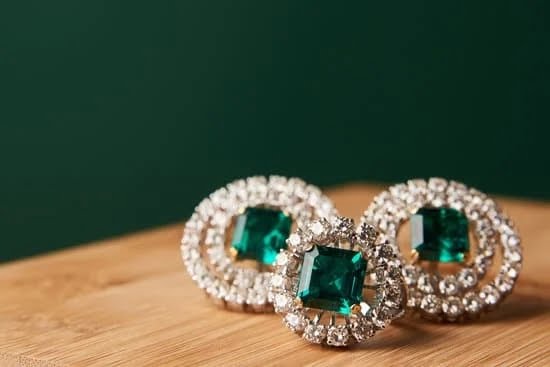The history of Cherokee jewelry encompasses a rich and vibrant tradition that dates back centuries. From early forms crafted from shell and bone to the contemporary designs influenced by nature, the evolution of Cherokee jewelry reflects the cultural heritage and artistic expression of the Cherokee people. This article explores the origins, designs, spiritual meanings, and notable artists of Cherokee jewelry, shedding light on its significance in cultural preservation and identity.
Early forms of Cherokee jewelry were created from materials such as shell, bone, and copper, reflecting the connection between the Cherokee people and their natural surroundings. The influence of nature in these designs is evident in the use of symbols such as animals, plants, and geometric patterns, each carrying spiritual and symbolic meanings that enrich the artistry of Cherokee jewelry.
As time passed, Cherokee jewelry evolved from its traditional forms to contemporary styles that incorporate modern techniques and materials while still honoring its cultural roots. Notable artists have made significant contributions to this art form, preserving the legacy of Cherokee jewelry through their craftsmanship and creativity. Today, the market for Cherokee jewelry continues to thrive as demand grows for authentic pieces that represent the unique heritage and craftsmanship of the Cherokee people.
Early Forms of Cherokee Jewelry
The history of Cherokee jewelry dates back centuries, with early forms of adornment made from a variety of materials including shell, bone, and copper. These materials were readily available to the Cherokee people and were used to create intricate and meaningful pieces that reflected the culture and traditions of the tribe.
In the early days, Cherokee jewelry was often made using shells such as freshwater pearls, whelk shells, and conch shells. These shells were meticulously carved and shaped into beads, pendants, and other decorative elements. Bone was also a popular material for jewelry making, with artisans using animal bones to create unique pieces that often featured intricate carvings and designs.
As trade with European settlers increased, the Cherokee people began incorporating copper into their jewelry making. Copper was highly valued for its malleability and durability, allowing artisans to create more elaborate and ornate pieces. The introduction of metalworking techniques from European settlers also influenced the design and craftsmanship of Cherokee jewelry during this time.
The use of traditional materials such as shell and bone alongside the incorporation of copper reflects the adaptability and resourcefulness of the Cherokee people in creating their adornments. These early forms of Cherokee jewelry laid the foundation for the evolution of styles and techniques that continue to be celebrated today.
The Influence of Nature in Cherokee Jewelry Designs
The use of natural materials and the incorporation of nature-inspired designs have long been significant elements in the history of Cherokee jewelry. From early forms of jewelry made from shell, bone, and copper to more contemporary pieces, the influence of nature can be seen in various aspects of Cherokee jewelry designs.
Connection to the Land and Animals
Cherokee artisans often looked to the natural world around them for inspiration when creating their jewelry. The flora and fauna of their homeland were reflected in their designs, with motifs such as feathers, animals, plants, and natural landscapes being commonly depicted. These symbols held deep cultural and spiritual significance for the Cherokee people, representing their connection to the land and the importance of living in harmony with nature.
Use of Natural Materials
In addition to drawing inspiration from nature, Cherokee jewelry traditionally utilized a wide range of natural materials sourced from their environment. This included materials like freshwater pearls, shells, turquoise, coral, and wood, all of which were skillfully crafted into intricate pieces that reflected the beauty and abundance of the natural world around them.
Symbolism in Nature-Inspired Designs
The use of nature-inspired designs in Cherokee jewelry also carried symbolic meanings that were deeply rooted in Cherokee culture and spirituality. For example, certain animal motifs were believed to imbue wearers with specific qualities or attributes, while elements like water or mountains held spiritual significance as symbols of life force or ancestral connections. Understanding the symbolism woven into these nature-inspired designs is essential for appreciating the cultural significance and historical context of Cherokee jewelry.
The influence of nature on Cherokee jewelry designs not only speaks to the artistry and creativity of Cherokee artisans but also serves as a reminder of the profound respect and reverence they held for the natural world. Appreciating this connection between culture and nature is crucial in understanding the history of Cherokee jewelry and its enduring legacy.
The Spiritual and Symbolic Meanings Behind Cherokee Jewelry
Cherokee jewelry has been an integral part of the cultural and spiritual identity of the Cherokee people for centuries. The intricate designs and use of various materials in Cherokee jewelry are not merely ornamental, but imbued with deep spiritual and symbolic meanings that reflect the beliefs and values of the Cherokee tribe.
Spiritual Beliefs Reflected in Jewelry
In Cherokee culture, every aspect of life is intertwined with spirituality, and this is no different when it comes to jewelry. The materials used in creating Cherokee jewelry, such as shell, bone, copper, and later silver, are chosen for their spiritual significance. For example, shells were believed to be a symbol of protection by the Cherokees, and wearing them as jewelry was thought to bring safety to the wearer.
Symbolic Meanings Embedded in Designs
The designs carved or etched onto Cherokee jewelry also carry deep symbolic meanings. Nature plays a significant role in these designs; animals like bears, birds, snakes, and turtles often appear in Cherokee jewelry as symbols of strength, freedom, wisdom, and longevity respectively. Furthermore, geometric patterns representing elements like water or fire can also be found in traditional Cherokee jewelry.
The Connection Between Jewelry and Ceremonies
Cherokee jewelry is not only worn for adornment but also plays a vital role in religious ceremonies and rituals. Pieces of jewelry are often blessed by shamans before important events or ceremonies like weddings or war dances. Each piece carries with it the spiritual energy of the ceremony it was worn in or created for.
As we delve into the history of Cherokee jewelry we come to understand that each piece is not just a beautiful accessory; it is a tangible connection to the spiritual world and represents centuries-old traditions and beliefs held dear by the Cherokee people.
The Evolution of Cherokee Jewelry
Cherokee jewelry has a long and storied history, evolving from traditional forms to contemporary designs that continue to captivate enthusiasts and collectors around the world. The evolution of Cherokee jewelry reflects not only changes in style and technique but also the cultural shifts and influences that have shaped the artistry of the Cherokee people over time.
Early forms of Cherokee jewelry were crafted using materials such as shell, bone, and copper. These natural elements were transformed into stunning adornments that held deep significance within the Cherokee community. As metalworking techniques advanced, silver became a prominent material in Cherokee jewelry, adding a new dimension to the art form. Today, contemporary Cherokee jewelry incorporates a wide range of materials, including turquoise, coral, and other gemstones, embracing both traditional craftsmanship and modern aesthetics.
The evolution of Cherokee jewelry is not just about changes in design – it also reflects the resilience and adaptability of the Cherokee people in preserving their cultural heritage. As trends come and go, the timeless appeal of Cherokee jewelry endures, continuing to honor tradition while embracing innovation. In today’s global marketplace, authentic Cherokee jewelry remains highly sought after by those who appreciate its unique beauty and the rich history it embodies.
- The use of natural elements like shell and bone
- The introduction of copper and later silver as prominent materials in Cherokee jewelry
- The incorporation of contemporary materials like turquoise and coral into modern designs
Notable Cherokee Jewelry Artists and Their Contributions
Cherokee jewelry has a rich and vibrant history, with a long line of talented artists who have contributed to the art form. Here are some notable Cherokee jewelry artists and the unique contributions they have made:
- Lloyd “Running Wolf” Kiva New: Known for his innovative use of traditional Cherokee designs in contemporary jewelry, New’s work has been influential in bridging the gap between old and new. He often incorporates symbols and motifs from Cherokee culture into his pieces, creating a powerful connection to the past while embracing modern techniques.
- Mary Adams Keenan: As one of the first Cherokee women to gain recognition as a jeweler, Keenan’s work is characterized by its attention to detail and intricate beadwork. Her pieces often reflect nature and incorporate elements from the natural world, such as feathers, shells, and precious gemstones.
- Tommy Wildcat: A master silversmith, Wildcat is renowned for his skill in crafting traditional silverwork adorned with turquoise and other semiprecious stones. His intricate metalwork often features geometric patterns and designs inspired by Cherokee heritage.
These artists, along with many others, have played a crucial role in preserving the history of Cherokee jewelry while also pushing the boundaries of innovation within the art form. Their dedication to their craft has ensured that Cherokee jewelry remains a significant aspect of Native American culture and continues to thrive in contemporary society.
By honoring the legacy of these artists and their contributions, we can appreciate and preserve the rich tradition of Cherokee jewelry for future generations.
The Role of Cherokee Jewelry in Cultural Preservation and Identity
Cherokee jewelry has played a significant role in the cultural preservation and identity of the Cherokee people. For centuries, jewelry has been an integral part of Cherokee tradition, representing their connection to nature, spirituality, and community. The art of creating intricate pieces of jewelry has been passed down through generations, serving as a way to honor the past and celebrate the present.
One of the most important aspects of Cherokee jewelry is its role in preserving cultural traditions. The craftsmanship and designs of these pieces often reflect the natural world, with motifs inspired by animals, plants, and landscapes that hold special significance in Cherokee culture. By continuing to create and wear traditional jewelry, Cherokee people are able to maintain a connection to their heritage and keep their customs alive.
In addition to cultural preservation, Cherokee jewelry also serves as a means of expressing individual and collective identity. Each piece is unique and holds personal or communal meaning. Whether it’s a necklace adorned with symbols representing strength or a pair of earrings signifying unity, Cherokee jewelry communicates the values and beliefs of the wearer while also identifying them as part of the Cherokee community.
| Role | Impact |
|---|---|
| Cultural Preservation | Preserves traditions and customs |
| Identity Expression | Communicates individual and communal values |
The Market for Cherokee Jewelry Today
In recent years, there has been a renewed interest in the history of Cherokee jewelry, as well as a growing demand for authentic pieces. The market for Cherokee jewelry today is shaped by both traditional and contemporary designs, with a focus on authenticity and cultural significance.
One of the key factors driving the market for Cherokee jewelry is the increasing interest in indigenous art and crafts. As more people become aware of the rich history and cultural significance of Cherokee jewelry, there is a growing demand for authentic pieces that honor and preserve this tradition. This has led to an increase in the sale and appreciation of Cherokee jewelry both within Native American communities and among collectors and enthusiasts worldwide.
In addition to demand, there is also a noticeable trend towards incorporating traditional Cherokee jewelry designs into modern fashion. Many artists are creating contemporary pieces that feature elements of traditional Cherokee jewelry, appealing to a broader audience while maintaining the integrity of the craft. This fusion of old and new not only contributes to the marketability of Cherokee jewelry but also ensures that this important aspect of Cherokee culture continues to thrive in today’s world.
Conclusion
Cherokee jewelry has a long and rich history that dates back centuries, evolving from early forms made of natural materials to the stunning contemporary pieces crafted today. The history of Cherokee jewelry is a testament to the artistry, spirituality, and cultural significance of these adornments within the Cherokee Nation. It is clear that the legacy of Cherokee jewelry continues to thrive, honoring tradition while also embracing innovation.
As we reflect on the history of Cherokee jewelry, it is essential to recognize the invaluable contributions of notable artists who have dedicated themselves to preserving and advancing this meaningful art form. Their work not only keeps the tradition alive but also serves as a source of inspiration for future generations of Cherokee artisans. By celebrating and supporting these talented individuals, we can ensure that the artistry and cultural significance of Cherokee jewelry endures for years to come.
In conclusion, honoring the legacy of Cherokee jewelry involves not only appreciating its beauty and craftsmanship but also actively engaging in its preservation. By understanding the spiritual and symbolic meanings behind each piece and recognizing their role in preserving cultural identity, we can contribute to the continued importance of Cherokee jewelry within its community and beyond.
As we continue to appreciate and uphold this tradition, we pay homage to the history of Cherokee jewelry and ensure that it remains a cherished part of Cherokee heritage for generations to come.
Frequently Asked Questions
What Jewelry Did the Cherokee Wear?
The Cherokee wore a variety of jewelry, including necklaces, bracelets, and earrings made from materials like copper, silver, beads, and shells. These pieces often featured intricate designs and were worn for adornment and ceremonial purposes.
What Are the Sacred Colors of the Cherokee?
The sacred colors of the Cherokee are red, blue, black, white, and green. Each color holds symbolic significance in Cherokee culture and is often incorporated into their clothing, pottery, and other artistic expressions as a way to honor their traditions and beliefs.
What Is the Oldest Native American Jewelry?
Some of the oldest Native American jewelry dates back thousands of years and is associated with ancient civilizations such as the Ancestral Puebloans (also known as Anasazi), who inhabited present-day Arizona, New Mexico, Colorado, and Utah. Their jewelry often featured turquoise, shell beads, and intricate metalwork, showcasing their advanced craftsmanship and artistic skills.

Welcome to my jewelry blog! My name is Sarah and I am the owner of this blog.
I love making jewelry and sharing my creations with others.
So whether you’re someone who loves wearing jewelry yourself or simply enjoys learning about it, be sure to check out my blog for insightful posts on everything related to this exciting topic!





